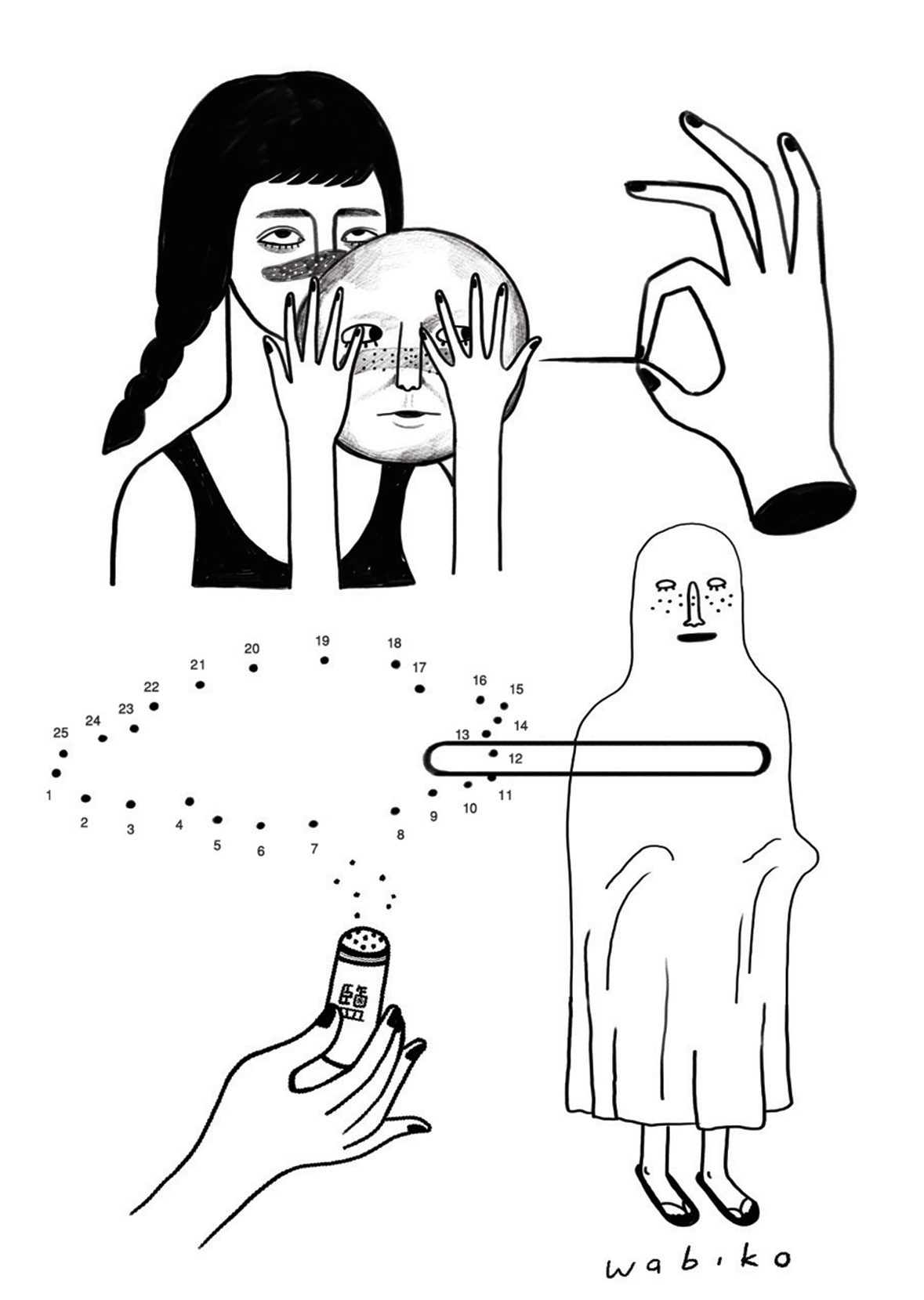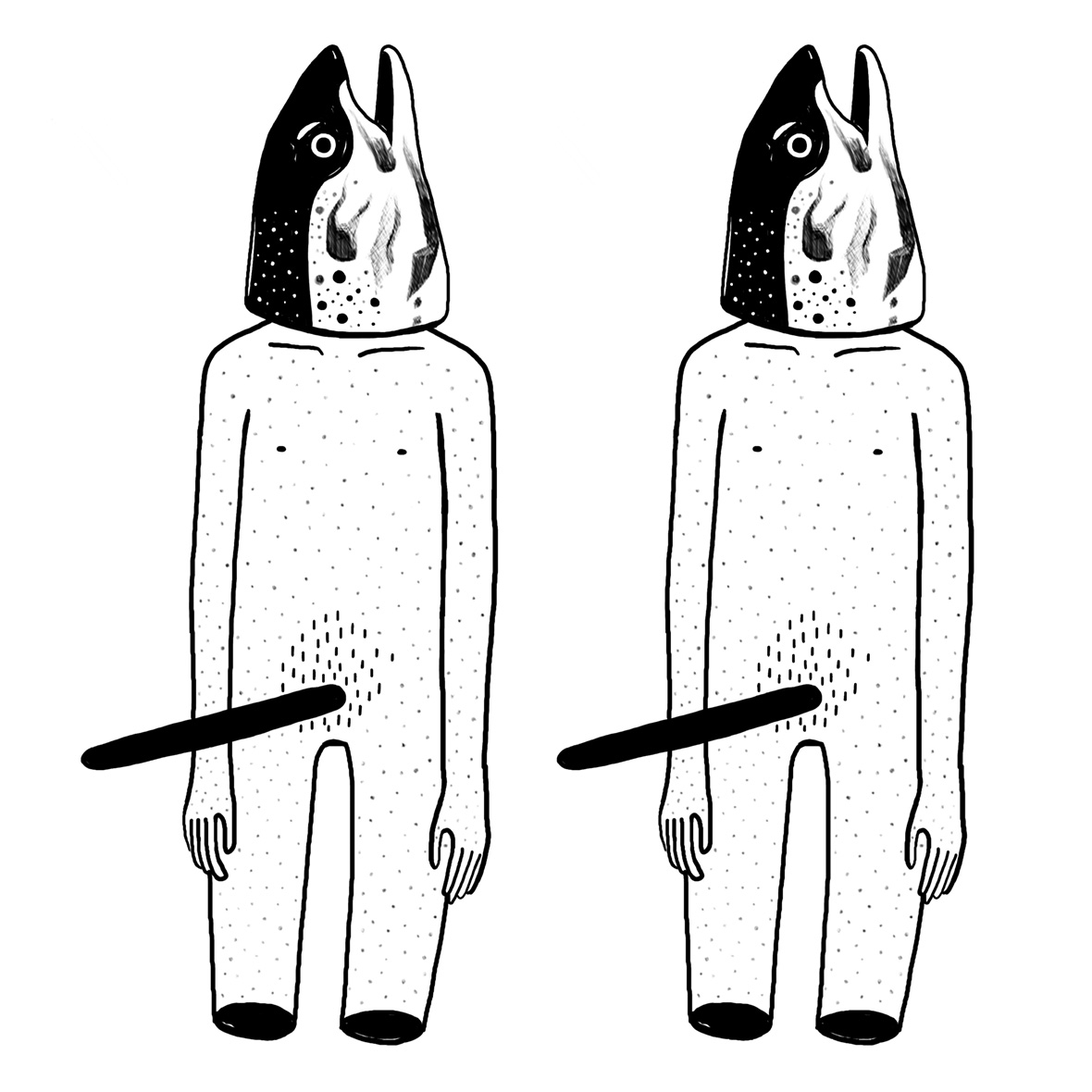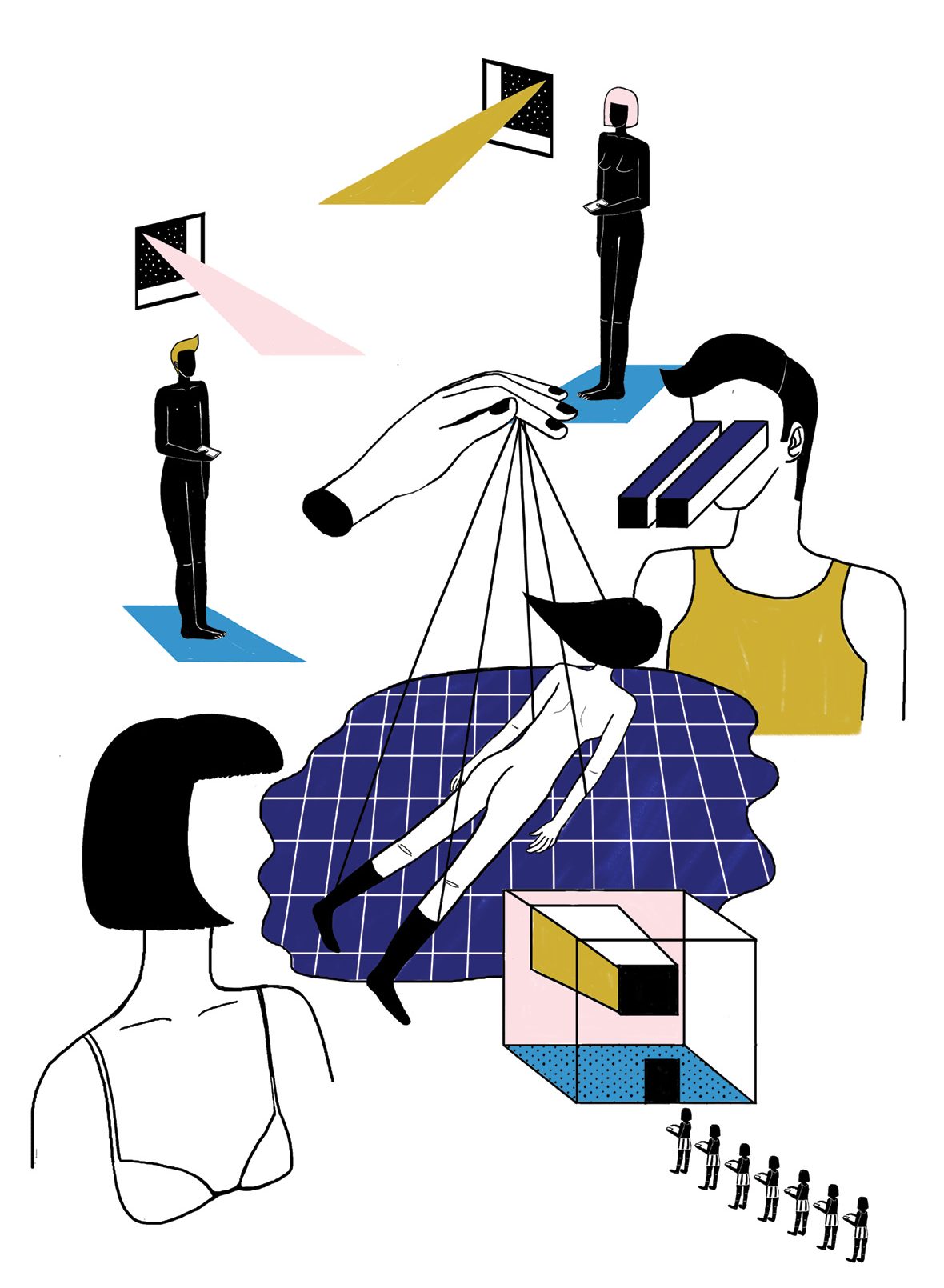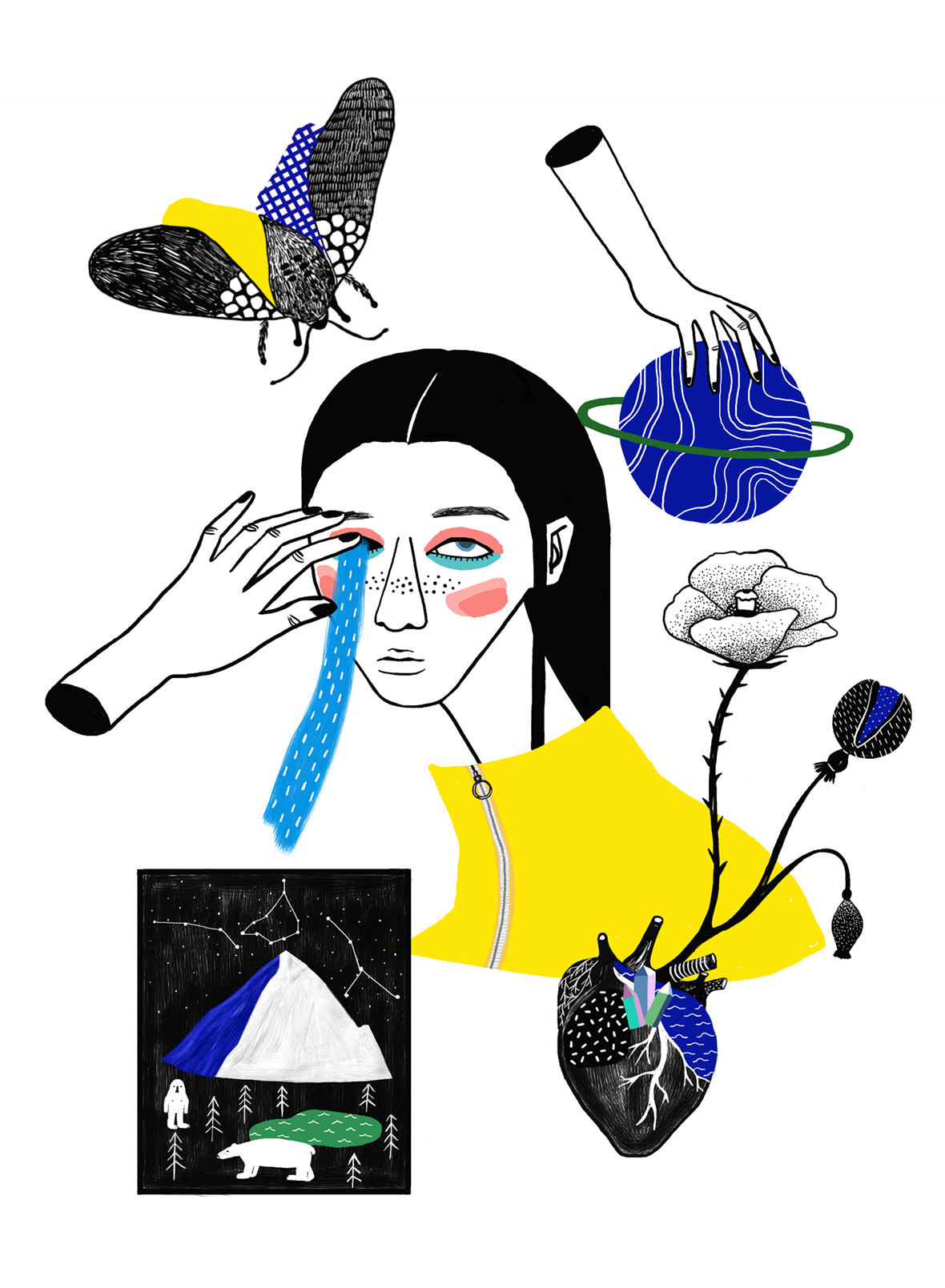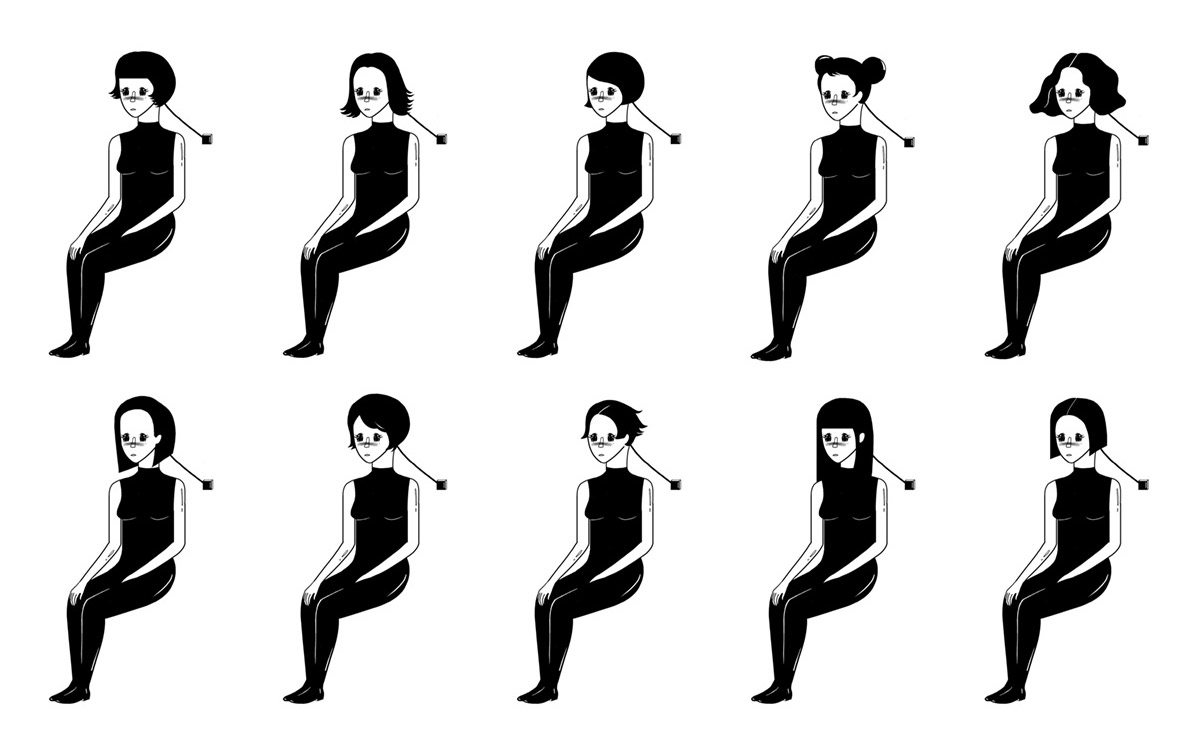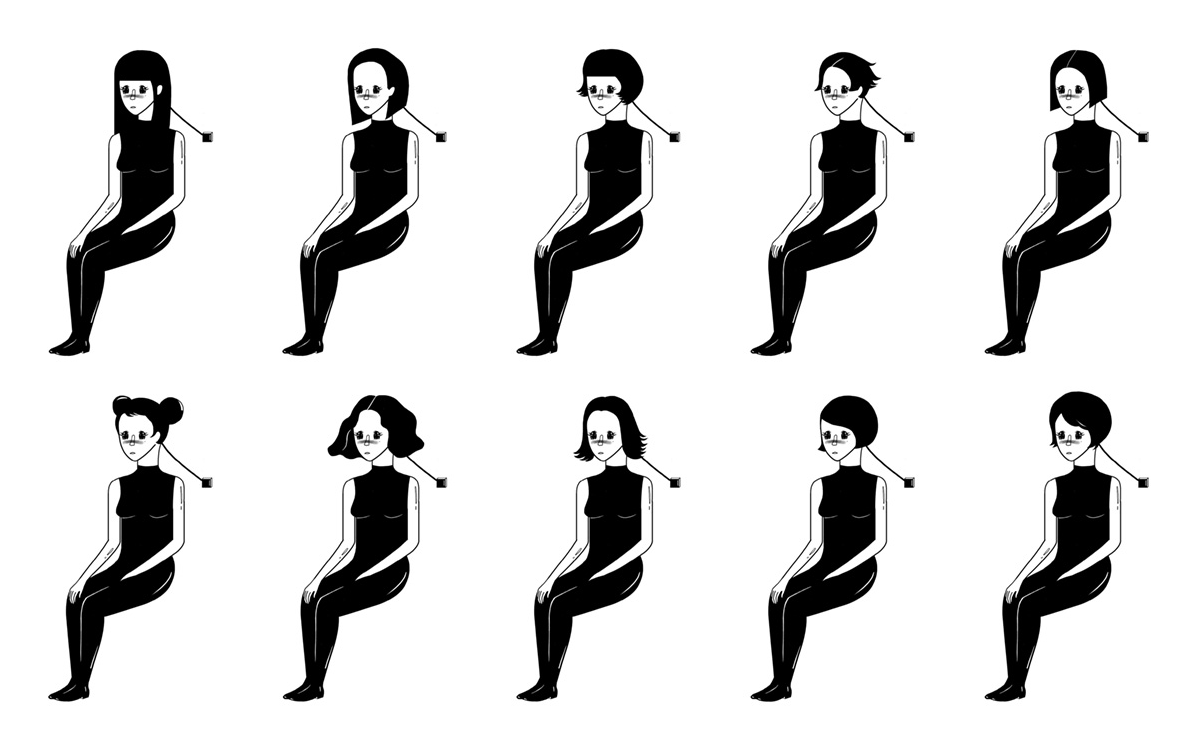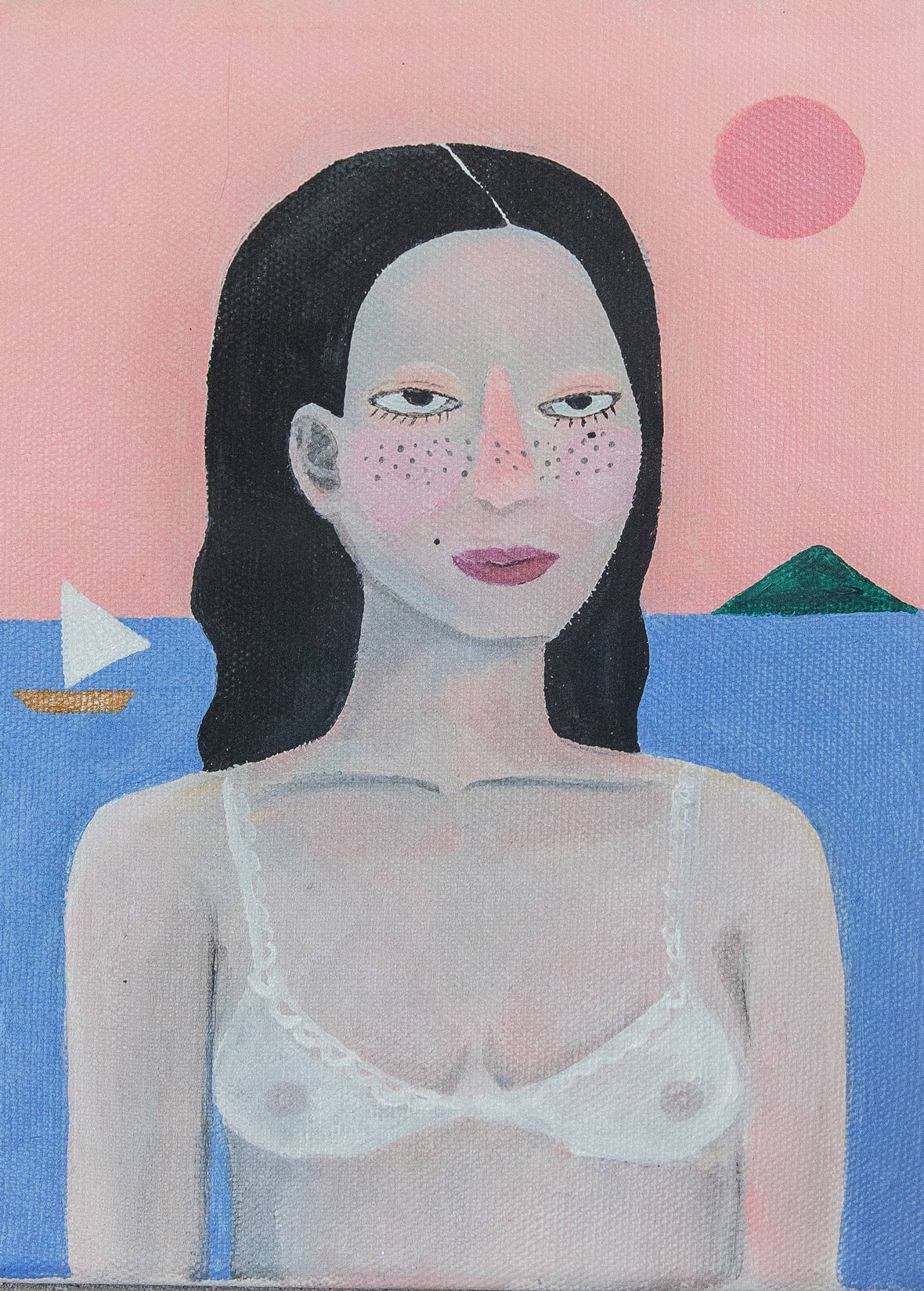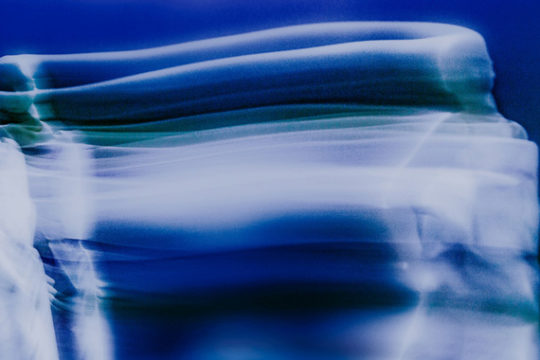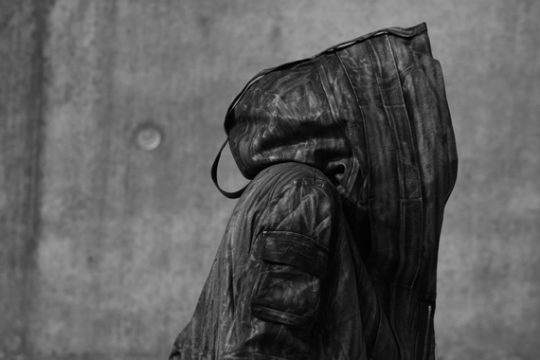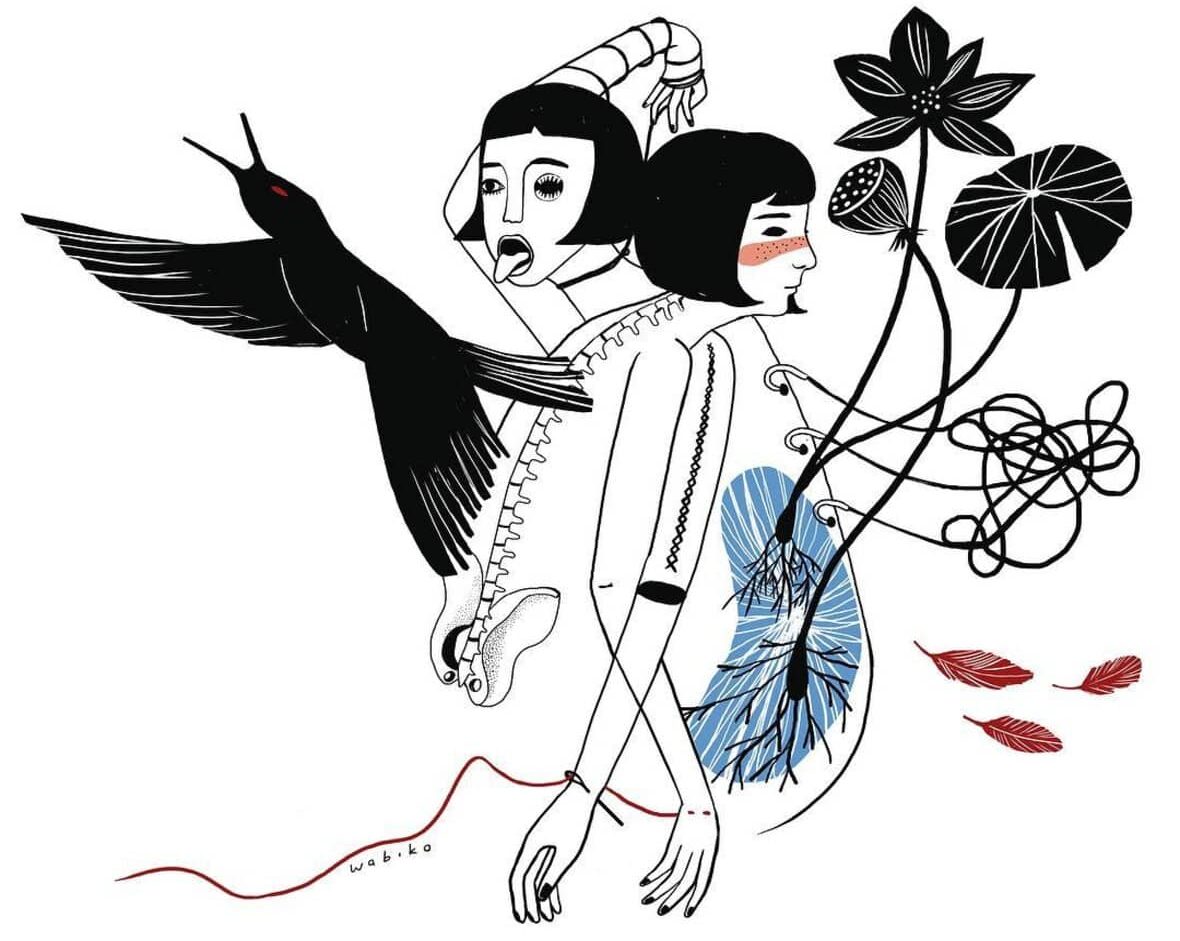
Malaysian illustrator Kexin Tan believes that modern life makes us miss out on the simple pleasures. From the changing shapes of clouds to the subtle gradients of color in the evening sky, we’ve lost the ability to observe the world around us with a sense of wonder. For Tan, illustration is a form of self-exploration that’s helped her rediscover the beauty of everyday life. “There are many—too many—beautiful things in the world. Why not open our eyes and look closer?” she asks. “The piece of Nattō that sticks to a pair of chopsticks could be something beautiful, too. Seeing it clinging to the chopstick could give you a different sense of calm.”
马来西亚插画师 Kexin Tan 认为现代人的生活缺少简单纯粹的乐趣。人们不再关注天空中云朵的形状变化,夜空中色彩浮动的微妙……我们正在失去用好奇去看待这个世界的能力。对 Kexin 来说,插画是自我探索的过程,亦能帮助她重新发现日常之美。“世界上美丽的事物太多了,为什么我们不睁开双眼去仔细看看?纳豆粘在筷子上也可以是很美好的事情,看到它们,会让你有一种平静的感觉。”
Tan draws under the name Wabiko, an alias that has dual origins. The first is wa bi, which means “nose-picking” in Mandarin. The name popped into her head when she realized that she didn’t care how others perceived her, sharing the same indifference as someone who actually picks their nose in public. Second, the name alludes to the Japanese philosophy of wabi-sabi, which stresses the lack of permanence in life and the acceptance of one’s flaws.
作为画家,Kexin 化名为 Wabiko。这个名字有两层意思,“wa bi” 在中文普通话中是 “挖鼻” 的意思,当她开始意识到自己不必在乎别人他人的看法时,这个名字突然出现在她的脑海中,字面意思就像是那些在公共场合挖鼻孔的人一样;其次,这个名字也源自日本 “wabi-sabi”(侘寂)哲学的寓意,即生命非永存、接受事物的缺陷性。
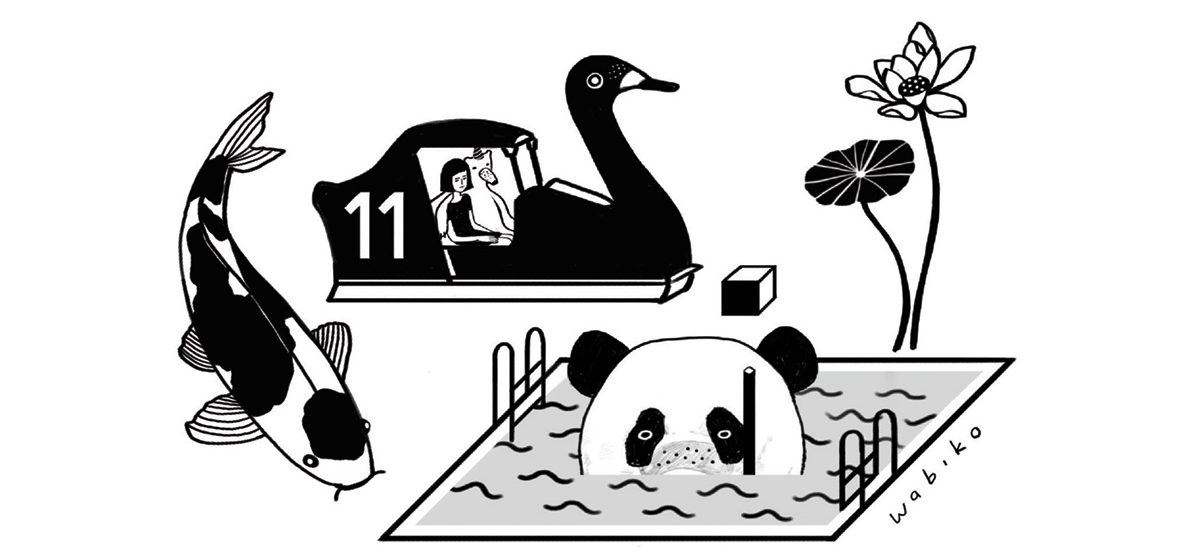
Tan’s first solo exhibition, Memories Are Trapped and Kept, has been in the works for the past year. It’s inspired by the memories of people and moments that disappear like a dream, but are still kept within our subconscious and may one day reappear in our lives in the form of déjà vu.
“We often forget about certain chapters or moments in our lives, but they reappear when we see something, hear a familiar tune, or experience a scent,” she says. “We’re reminded of the feelings we used to have. Even though we’re like goldfish, always forgetting, those memories are trapped in our minds subconsciously and kept forever.”
Kexin 的个人作品首展《Memories Are Trapped and Kept》(《被困住和留住的回忆》)从过去一年到现在一直进行。其灵感是人们的一些记忆和经历,虽然像梦般转瞬即逝,却又一直留在潜意识中,也许在某一天就会以记忆幻觉 “déjà vu” 的形式在我们的生活中重现。
她说:“我们经常会忘记生活中的某些特定片段,但当那些事物重新出现在我的眼前,听到熟悉的曲调或闻到一种气味时,它们就会重新浮现在脑海。那一刻我们会想起曾经的感受。即使我们就像金鱼一样,总是会忘记,但是那些记忆却一直留在我们的潜意识中,被封存起来。”
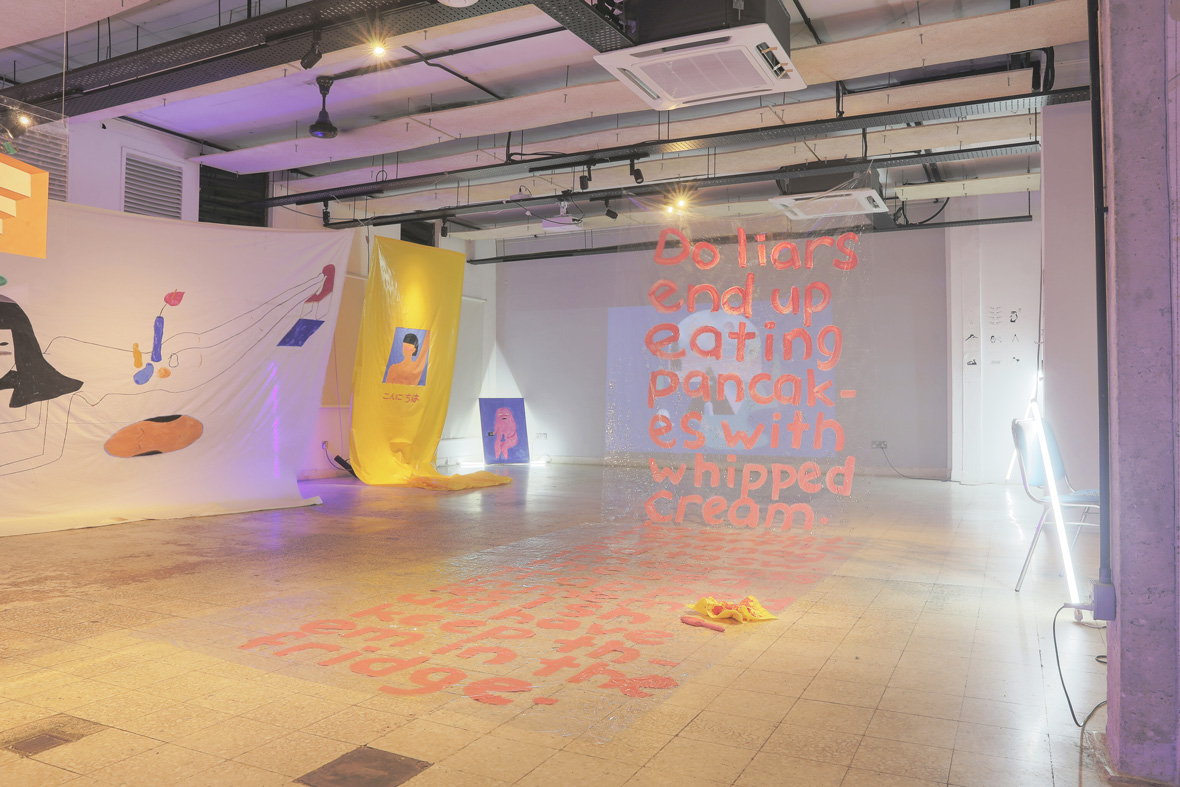
Memories Are Trapped and Kept was held at APW Bangsar, one of the premier cultural spaces in greater Kuala Lumpur. A friend suggested the location, and it seemed like a perfect fit, given the site’s history as a printing press. “I felt it had a deep connection with memories, too,” Tan says. “Our life changes throughout time but the imprint of our memories is impossible to wipe away.”
This collection, like most of Tan’s works, plays with whimsy, nostalgia, and surrealism, yet it’s not always cheerful. One illustration, The Lying Android, depicts an expressionless female figure whose belly button is connected to a power socket. She exudes a cold, robotic demeanor, while her elongated Pinocchio nose and blacked-out eyes suggest lying and a desire to hide one’s eyes from the light of truth.
这次展览在吉隆坡著名文化场所 APW Bangsar 举办,选址来自 Kexin 好友的推荐。Kexin 认为这里是举办展览的理想场地,由一间旧印刷厂改造而成,“我觉得这个地方与记忆有很深的联系。我们的生活会随时间而改变,但我们的记忆深处的痕迹却不会消失。”
展览的作品与 Kexin 大多数作品一样,充满奇思妙想、怀旧情怀和超现实主义色彩,风格却不总是欢乐活泼。其中一幅插画《The Lying Android》(《说谎的机器人》),描绘了一个面无表情的女性,她的肚脐连接着电源插座,整个人散发出一股如机器人般冷冰冰的气息,在她的脸上,如皮诺曹般的细长鼻子和无神的眼睛暗示了她的谎言,不愿意让眼睛透露自己真实的一面。
Tan draws in a varied style that shows the influence of Salvador Dalí, René Magritte, David Hockney, Junji Ito, Suehiro Maruo, and particularly the Malaysian artist Roslisham Ismail. Her works are open to the viewer’s interpretation. To her, the world is an illusion: the past is like “a melted candy on the tongue,” with an aftertaste that’s “unreal” and fades like a dream. “I’m someone who tends to overthink, or maybe even obsess. I record the moments in my life—dreams, the universe in my drawings. Words really can’t describe my feelings.”
Kexin 的绘画风格多样,从中可以看到来自萨尔瓦多·达利、雷内·马格利特、大卫·霍克尼、伊藤润二和丸尾末広的影响,其中马来西亚艺术家 Roslisham Ismail 对她的影响最为特别。她的作品开放性很强,令观众自行解读。对她来说,世界本来就是一种幻觉:过去就像“舌头上融化的糖果”,有着“不真实”的回味,像梦一样消散。“我是一个容易想太多的人,甚至会执迷不悟。我会在画中记录自己生活中的瞬间,如梦境和这个世界。我的感受很难用言语形容。”
Tan is aware of Malaysia’s slow development in the art world, but she’s optimistic about the future. As more people take an interest in art, she says, the “hungry” stigma often attached to artists is fading. She’s hopeful that Malaysians will eventually become more daring in their artistic pursuits.
“Now there are more and more platforms for artists to shine and showcase their work. I hope this brings out more talented and inspiring artists,” she says. “Don’t constrain yourself or create art for the sake of approval of others. Create because you want to.”
Ke Xin 觉得马来西亚的艺术界发展太慢,但她对未来保持乐观。她说,随着越来越多人对艺术产生兴趣,人们对艺术家“难以温饱”的印象也在改变。她希望,在马来西亚会有越来越多人能大胆地追求艺术创作。
“现在有越来越多的平台让艺术家展示自己的作品。我希望这能吸引更多有才华和有想法的艺术家。”她说,“不要束缚自己,也不要为了别人的认可而创作艺术,按照自己的想法来创作。”
Like our stories? Follow us on Facebook and Instagram.
Website: wabikowabiko.com
Instagram: @_wabiko
Facebook: ~/wabikowabiko
Contributor: Joanna Lee
Chinese Translation: Olivia Li

